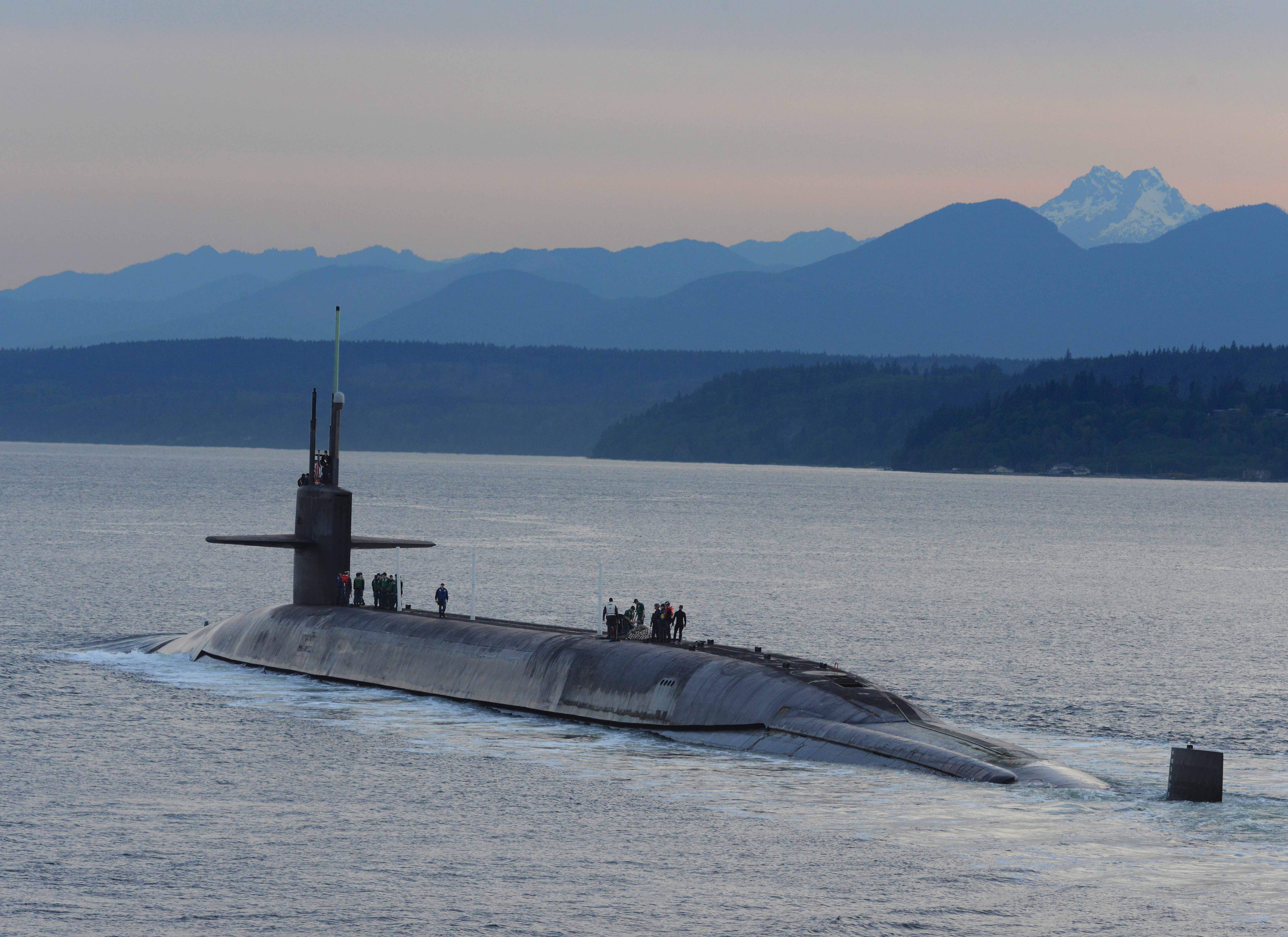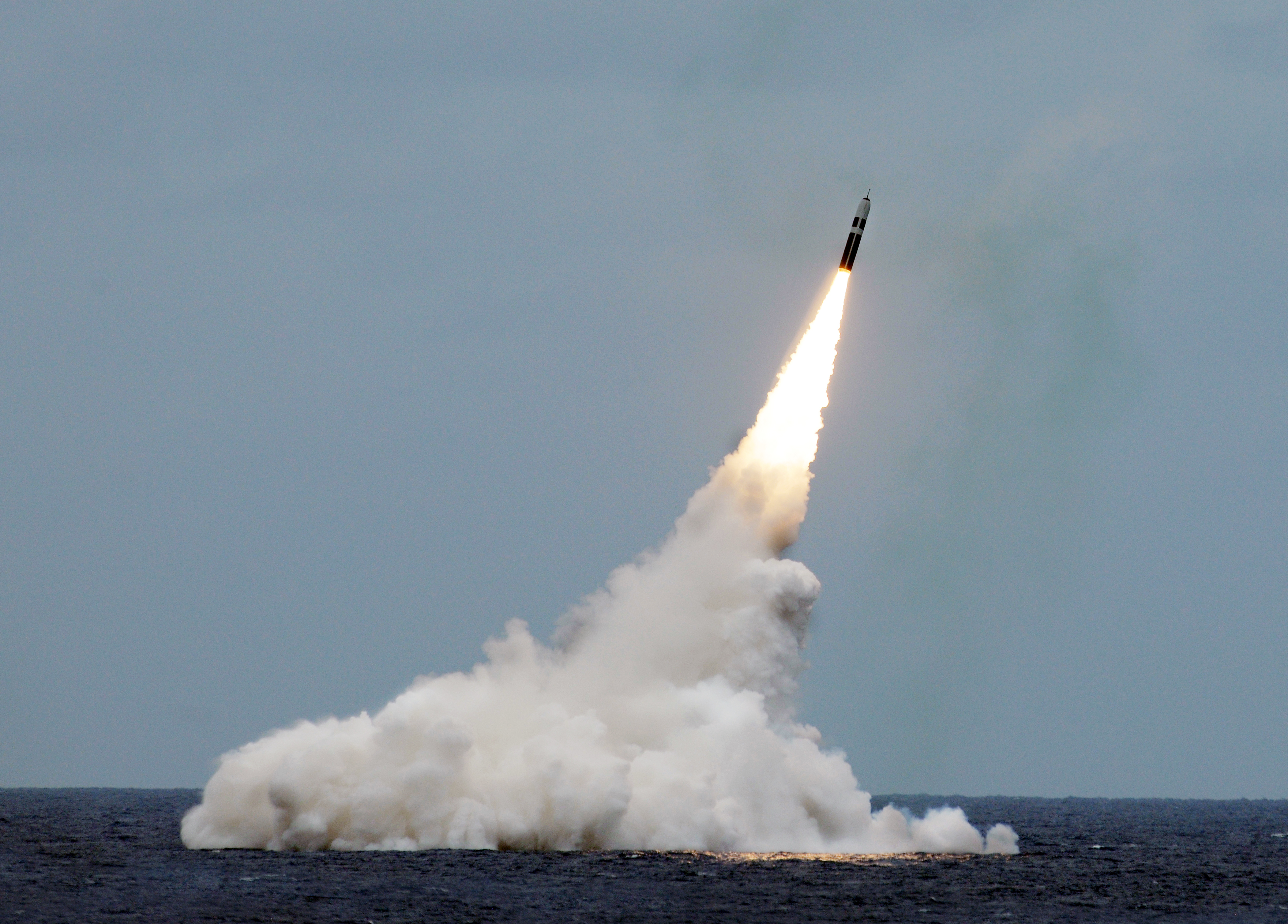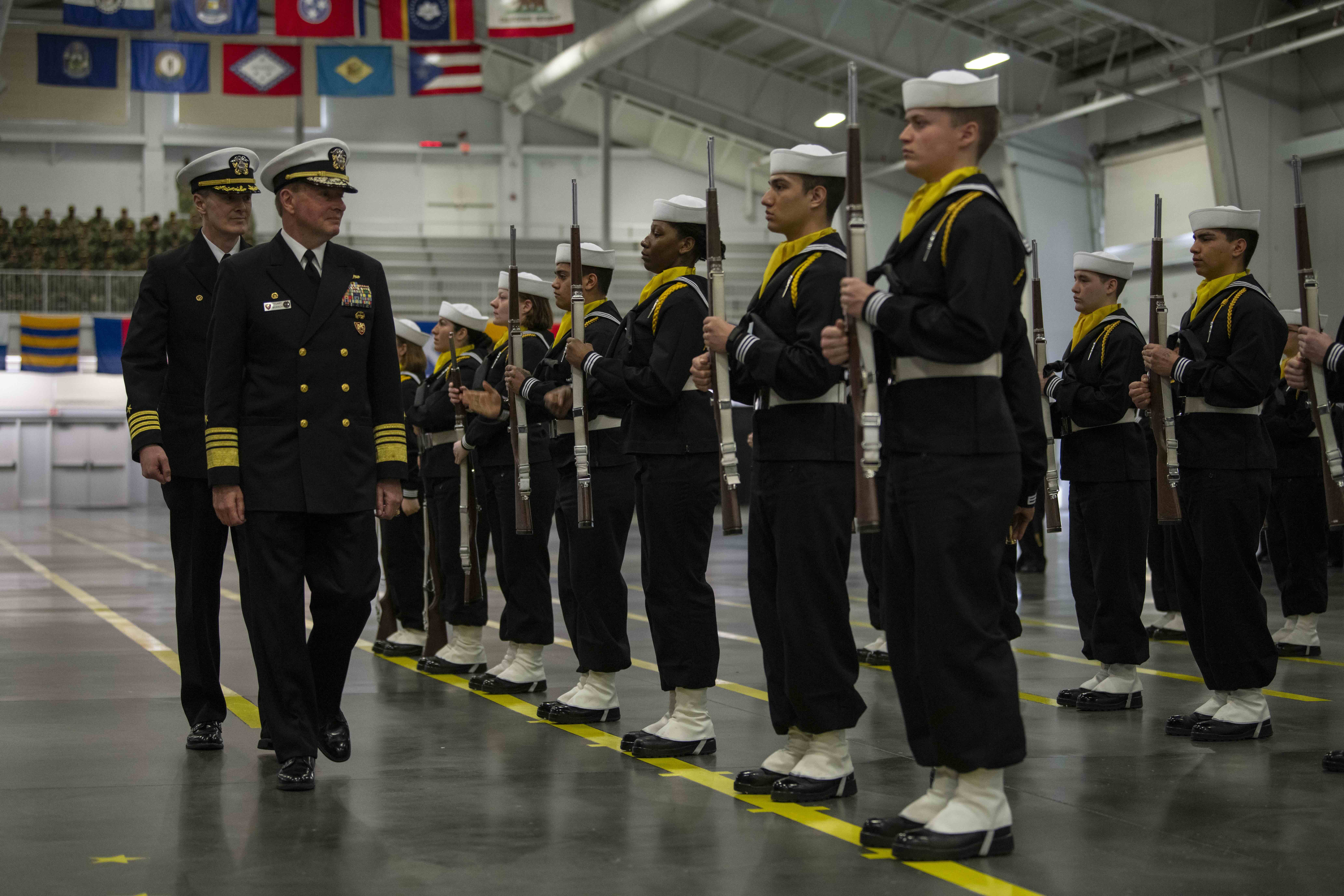
This post has been updated to note that SSGN submarines, not SSBNs, would likely take on the conventional prompt global strike mission, if the Pentagon were to continue with this capability development.
The Navy Strategic Systems Program and the Department of Defense this week tested a conventional prompt strike capability that could one day be fielded from guided-missile submarines.
The Pentagon’s conventional prompt global strike capability would allow the U.S. to hit any target on the planet with precision-guided weapons in less than an hour, supplementing the comparable nuclear strike capability and serving as another deterrence effort.
Strategic Systems Program (SSP) Director Vice Adm. Terry Benedict said on Nov. 2 that “I’m very proud to report that at 0300 on Monday night SSP flew from Hawaii [Pacific Missile Range Facility] … the first conventional prompt strike missile for the United States Navy in the form factor that would eventually, could eventually be utilized if leadership chooses to do so in an Ohio-class tube. It’s a monumental achievement.”
The admiral spoke at the Naval Submarine League’s annual symposium in Arlington, Va. He credited his organization for, in addition to working on the nuclear weapons that support the Ohio-class boomers and their Columbia-class replacement in development now, “we have supported the OSD AT&L defense-wide account for technology demonstration, and on our first go out of the box a very successful flight of a conventional prompt strike maneuvering reentry body.”
Four Ohio-class SSBNs were previously converted to guided-missile submarines (SSGNs) to carry conventional weapons. These four subs — or future Virginia-class attack submarines with the Virginia Payload Module that inserts additional missile tube capacity into the smaller boat — would likely be the ones contributing to conventional prompt global strike, if Pentagon leadership were to pursue the idea being tested now, the Strategic Systems Program office told USNI News.

When asked about the test during a question and answer session, Benedict said he could not comment further and had to refer all questions to the Office of the Under Secretary of Defense for Acquisition, Technology, and Logistics (OUSD(AT&L)), which manages the conventional prompt strike capability.
Pentagon spokesman Cmdr. Patrick Evans told USNI News today that “the Navy Strategic Systems Program (SSP), on behalf of the Department of Defense, conducted an Intermediate Range Conventional Prompt Strike Flight Experiment-1 (CPS FE-1) test on Oct. 30, 2017, from Pacific Missile Range Facility, Kauai, Hawaii. The test collected data on hypersonic boost-glide technologies and test-range performance for long-range atmospheric flight. This data will be used by the Department of Defense to anchor ground testing, modeling, and simulation of hypersonic flight vehicle performance and is applicable to a range of possible Conventional Prompt Strike (CPS) concepts.”
In addition to Navy and AT&L assets, the Missile Defense Agency participated in tracking and data collection activities, he added.
Evans added that AT&L “is investigating technologies and concepts that are potentially useful for developing intermediate-range conventional capabilities through modeling and simulation, ground tests, and flight test experiments. OUSD(AT&L) uses a national team, comprised of Navy, Army, Air Force, national research laboratories, and university affiliated research centers, to pursue technology development objectives. The Navy was assigned to lead the Flight Experiment 1 (FE-1).”





